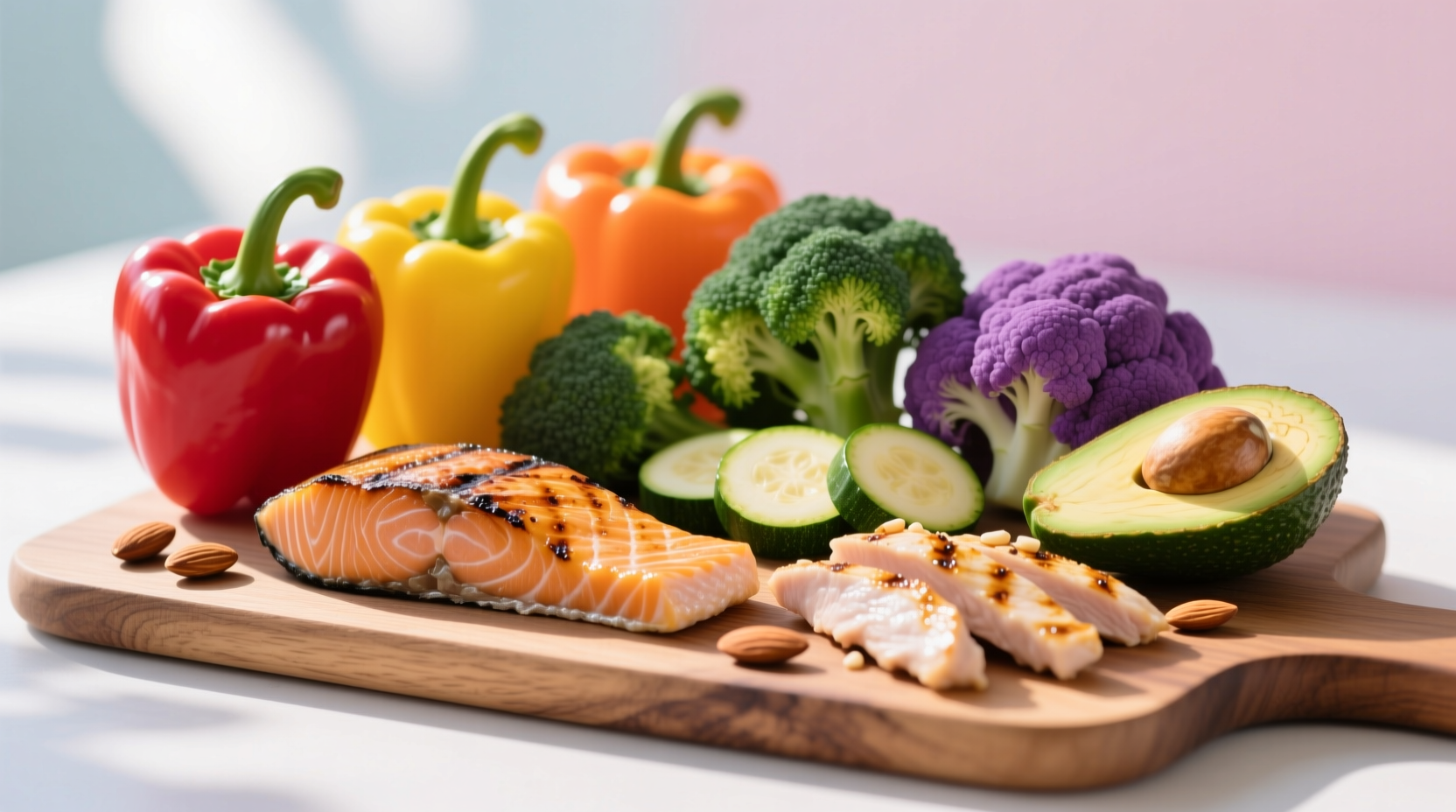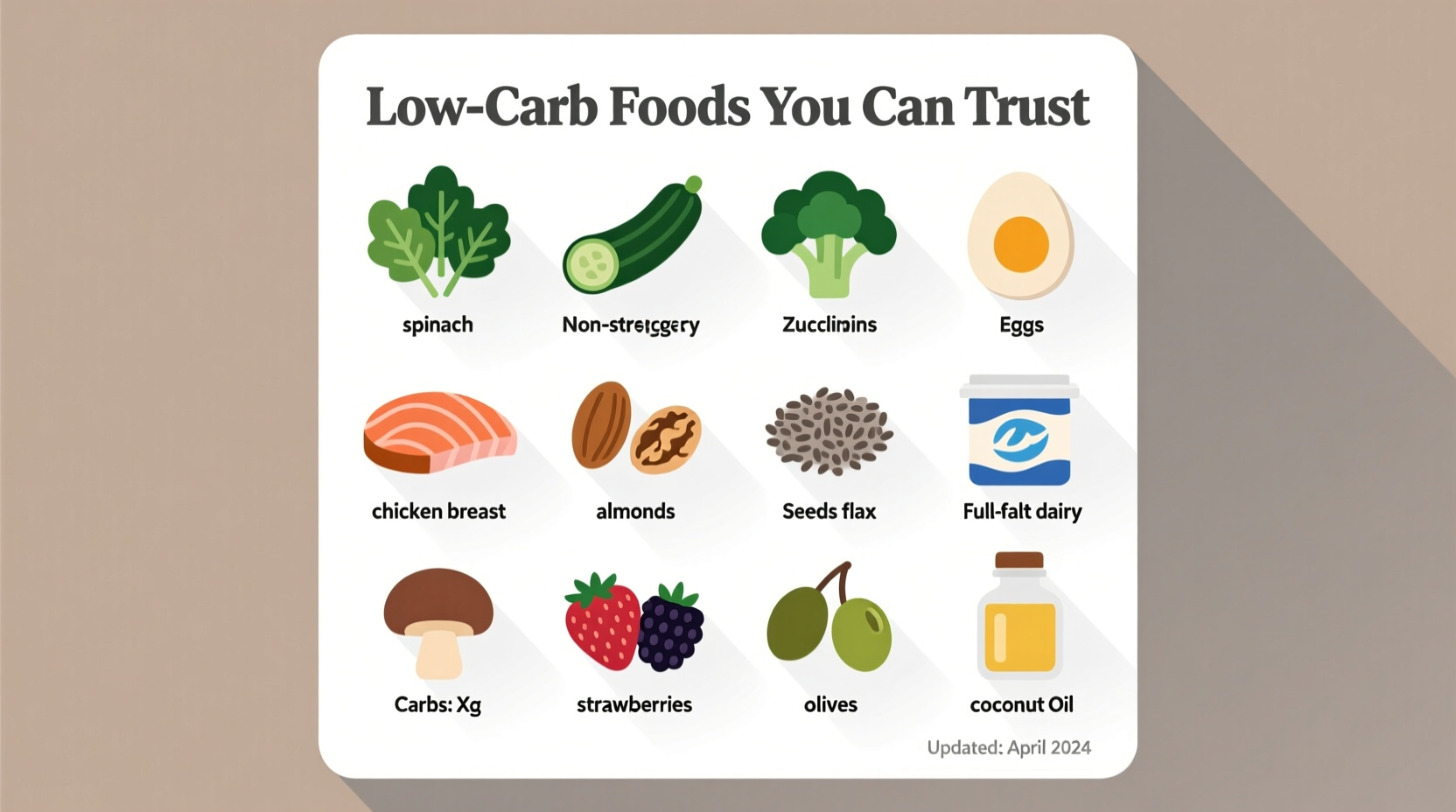Discover exactly which foods fit your low-carb lifestyle without compromising nutrition or flavor. Whether you're managing blood sugar, following a keto diet, or simply reducing carbohydrate intake, this guide delivers practical, science-backed food choices you can implement immediately.
Understanding Low-Carb Food Categories
Not all low-carb foods are created equal. The most effective low-carb eating focuses on nutrient-dense options that provide essential vitamins, minerals, and fiber while keeping carbohydrate counts minimal. Let's break down the food groups that consistently deliver the lowest carbohydrate content per serving.
Non-Starchy Vegetables: The Foundation
When building a low-carb meal, non-starchy vegetables should form the bulk of your plate. These options provide essential nutrients and fiber with minimal carbohydrate impact. Unlike their starchy counterparts (potatoes, corn, peas), non-starchy vegetables typically contain fewer than 5 grams of net carbs per cup.
According to the USDA FoodData Central database, these vegetables consistently rank among the lowest in carbohydrates:
| Vegetable | Net Carbs per 100g | Key Nutrients |
|---|---|---|
| Spinach (raw) | 0.4g | Vitamin K, A, folate, iron |
| Broccoli (raw) | 2.7g | Vitamin C, K, fiber, potassium |
| Zucchini (raw) | 2.1g | Vitamin A, manganese, potassium |
| Asparagus (raw) | 1.9g | Folate, Vitamin K, A, C |
| Cauliflower (raw) | 2.8g | Vitamin C, K, folate, fiber |
This data comes directly from the USDA's comprehensive food composition database, the most reliable source for nutritional information in the United States. When selecting vegetables for a low-carb diet, focus on leafy greens, cruciferous vegetables, and other above-ground varieties which naturally contain fewer carbohydrates than root vegetables.
Protein Sources with Minimal Carbs
Animal proteins are naturally carb-free and form the backbone of most low-carb eating patterns. Whether you're following a strict ketogenic diet or simply reducing carbohydrates, these protein options deliver maximum nutrition without carbohydrate concerns:
- Eggs (0g net carbs per large egg)
- Chicken breast (0g net carbs per 3oz)
- Salmon (0g net carbs per 3oz)
- Beef (0g net carbs per 3oz)
- Turkey (0g net carbs per 3oz)
The American Diabetes Association confirms that pure protein sources contain negligible carbohydrates, making them ideal for blood sugar management. Their 2023 nutrition guidelines emphasize protein's role in maintaining stable glucose levels, particularly when paired with non-starchy vegetables.

Healthy Fats That Won't Spike Blood Sugar
Fats contain no carbohydrates, making them essential components of any low-carb eating pattern. However, not all fats offer equal nutritional value. Focus on these whole-food fat sources:
- Avocado (1.8g net carbs per 50g)
- Olive oil (0g net carbs per tablespoon)
- Coconut oil (0g net carbs per tablespoon)
- Butter (0.1g net carbs per tablespoon)
- Olives (0.5g net carbs per 5 large olives)
The Harvard T.H. Chan School of Public Health notes that monounsaturated and polyunsaturated fats from whole food sources provide cardiovascular benefits while keeping carbohydrate intake minimal. Their research shows these fats improve insulin sensitivity, making them particularly valuable for those managing blood sugar levels.
Strategic Dairy Choices
Not all dairy products fit a low-carb approach, but certain options deliver protein and fat with minimal carbohydrates:
- Hard cheeses (cheddar, parmesan): 0.4-1g net carbs per ounce
- Plain Greek yogurt (full fat): 3-4g net carbs per 100g
- Cream cheese: 0.8g net carbs per ounce
- Heavy cream: 0.4g net carbs per tablespoon
When selecting dairy products, always check nutrition labels for added sugars which can dramatically increase carbohydrate content. The CDC's dietary guidelines emphasize reading food labels carefully to identify hidden carbohydrate sources in seemingly healthy products.
Low-Carb Fruit Options (Use Sparingly)
Fruit generally contains more carbohydrates than other food groups, but these options provide the lowest carb counts while delivering valuable nutrients:
- Avocado (technically a fruit): 1.8g net carbs per 50g
- Lemons: 2.5g net carbs per medium fruit
- Limes: 2.1g net carbs per medium fruit
- Strawberries: 5.5g net carbs per 100g
- Raspberries: 5.4g net carbs per 100g
Practical Implementation Tips
Knowing which foods are low in carbohydrates is only half the battle. Here's how to successfully incorporate them into your daily routine:
Reading Nutrition Labels Like a Pro
When evaluating packaged foods, focus on "Total Carbohydrates" and subtract "Dietary Fiber" and "Sugar Alcohols" to calculate net carbs. The FDA requires this information on all nutrition facts panels, making it easier to identify truly low-carb options.
Avoiding Hidden Carbohydrates
Many seemingly healthy foods contain hidden carbohydrates that can derail your low-carb efforts:
- Sauces and dressings (often contain sugar)
- Processed meats (check for sugar additives)
- "Healthy" snacks (many contain hidden carbs)
- Vegetable juices (concentrated carbohydrates)
Building Balanced Low-Carb Meals
Follow this simple formula for creating satisfying low-carb meals:
- Fill half your plate with non-starchy vegetables
- Add a palm-sized portion of protein
- Include a thumb-sized portion of healthy fats
- Season with herbs, spices, and low-carb sauces
Special Considerations for Different Goals
Your specific health goals will determine how strictly you need to monitor carbohydrate intake:
- Ketogenic diet: Aim for 20-50g net carbs daily
- Blood sugar management: Focus on consistent carb intake throughout the day
- General health: Incorporate low-carb foods as part of balanced eating pattern
The National Institutes of Health notes that individual carbohydrate tolerance varies significantly based on activity level, metabolic health, and personal goals. Their research shows that what constitutes "low-carb" differs substantially between individuals following a strict ketogenic approach versus those simply reducing refined carbohydrates.
Common Low-Carb Food Mistakes to Avoid
Even experienced low-carb eaters sometimes fall into these traps:
- Overconsuming dairy (especially higher-carb cheeses)
- Using too many sugar substitutes that trigger cravings
- Neglecting fiber-rich vegetables for variety
- Assuming all "keto-friendly" packaged foods are healthy
- Not tracking hidden carbs in condiments and sauces











 浙公网安备
33010002000092号
浙公网安备
33010002000092号 浙B2-20120091-4
浙B2-20120091-4